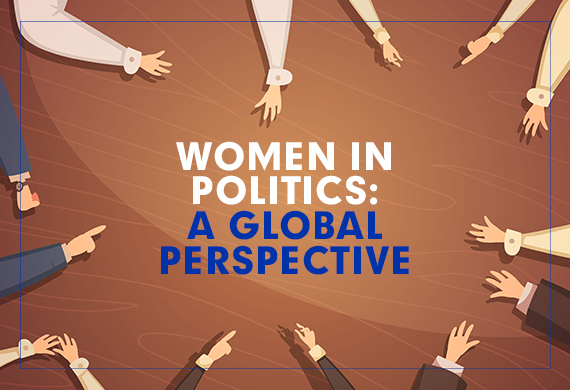
Women in politics: A Global Perspective
By: Vaishnavi Pradeep
There is a rising acknowledgment of the untapped ability and skills of women and women’s leadership. More than twenty years back, the rate of female depiction in national parliaments has augmented from 11.8 percent in the year 1998 to 17.8 percent in 2008 to 23.5 percent in 2018. The 2011 UN General Assembly resolution on women’s political participation reiterated that “women in every part of the world continue to be largely marginalized from the political sphere, often as a result of discriminatory laws, practices, attitudes and gender stereotypes, low levels of education, lack of access to health care, and the disproportionate effect of poverty on women.” The position of women in Indian politics was never more important than after independence.
The highest numbers of female politicians are from India. Women have engaged various positions in the political industry such as President, Prime Minister, Speaker of the Lok Sabha and various other positions. India is at a position of 148 globally in terms of illustrating women in government and Parliament. Women participating in politics have been considered as an important step towards women empowerment. In the current central government, women occupy approximately quarter of the Indian cabinet with positions like external affairs, commerce and human resource development and various other positions. The existence of women in local governments projects as a support for other women to get in various fields.
Influential political leaders in India
Of the present:
- Sonia Gandhi: She is considered to be the all- in- all of Indian congress. Her tenure as the congress president is the longest term in the history. Sonia Gandhi is also positioned as a chairperson of the United Progressive Alliance.
- Mamata Banerjee: She was the first woman railway minister of the country and first woman chief minister of West Bengal. In the year 1997, she has started Trinamool Congress, an anti-leftist party, to strengthen her position in West Bengal.
- Nirmala Sitaraman: She is the second woman and first BJP party member serving as the Defence Minister of India after Indira Gandhi. She was also the Minister of Commerce and Industry earlier in Modi Government.
Of the past:
- Sushma Swaraj: She was the Member of Parliament for seven times and Member of Legislative Assembly for three times. She is a BJP leader and was the Union Minister of External Affairs.
- Sheila Dikshit: She served as a Chief Minister of Delhi from 1998 to 2013 and was a senior member of congress party. In 2014 she became the governor of Kerala and resigned from the post the same year.
- Jayalalitha: She joined politics in 1982 and was the Chief Minister of Tamil Nadu and the general secretary of All India Anna Dravida Munnetra Kazhagam. She became the Rajya Sabha MP in the year 1984.
India is having such dominant female political figures from time to time. Their patterns and political qualities have been accepted and appreciated by man and their contribution to the development of the country can never be ignored.






